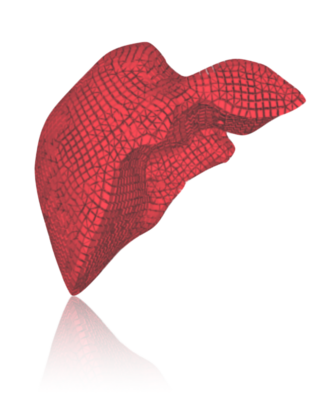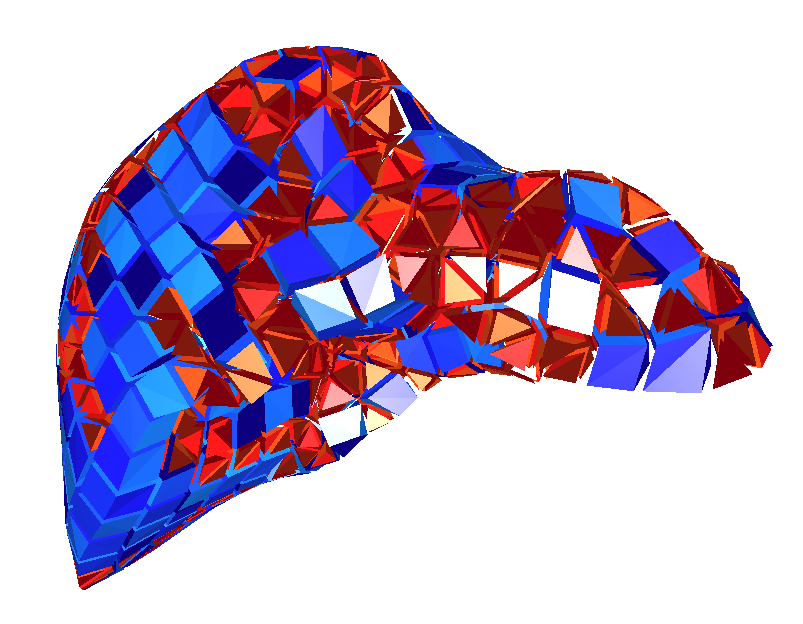Section: Research Program
Adaptive Meshing and Advanced Simulation Technologies
The principal objective of this second challenge is to improve, at the numerical level, the efficiency, robustness, and quality of the simulations. To reach these goals, we followed two main directions: adaptive meshing to allow mesh transformations during a simulation and support cuts, local remeshing or dynamic refinement into areas of interest; and numerical techniques, such as asynchronous solvers, domain decomposition and model order reduction. Most simulations in the field of biomechanics, physiological modeling, or even computer graphics, are performed using finite element approaches. Such simulations require a discretization of the domain of interest, and this discretization is traditionally made of tetrahedral or hexahedral elements. The topology defined by these elements is also considered constant. The first objective of this work is to jointly develop advanced topological operations and new finite element approaches that can leverage the use of dynamic topologies. This covers various topics, such as simulation for cutting, tearing, fracture but also the use of multi-resolution meshes where elements are subdivided into areas where numerical errors need to be kept small [37] , [38] . We also continued our work on mixed Finite Element Modeling where both tetrahedra and hexahedra can be used at the same time, allowing an ideal compromise between numerical efficiency and mesh adaptation to complex geometries (Figure 4 ). This research also includes the study of domain decomposition techniques and other coupling techniques for multi-domain multi-physics simulations.





